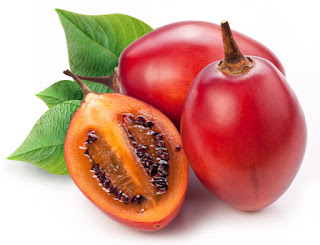 |
| Sasanqua Camellia flowering now. |
Here we are now almost June and frost are here with lovely bright sun filled days to follow putting a glow on the end of Autumn.
The mild days have encouraged another batch of weeds, hoeing while small will deal to them until heavy frosts arrive and stop growth.
We have some lovely autumn flowering sasanqua camellias putting on a show, it almost seems wrong with every plant near by shutting down for winter. You will probably see these lovely flowering camellias on offer in Garden centres, the perfect shrub to add interest to a garden in late autumn early winter.
Roses: I picked the last bunch of summer roses this week, we need some hard frosts now to harden stems and take care of fungus and bugs. Later in the month I will spray Lime Sulphur first which defoliates bushes then after pruning in July will spray Champion Copper and Conqueror Oil. New seasons, bare rooted roses arrive early in Garden centers these days, if planting prepare the ground by digging in old stable manure or bagged rose mix. If planting a rose in the same place a rose has been growing, you will need to remove most of the soil and replace with soil from another part of the garden, disease is transferred very quickly from one rose to another.
Peony rose tubers need to be planted now before the coldest months, if you must shift or divide established peonies, this is the time. Peonies do not respond well to transplanting but if planted well will require little maintenance. Choose the location wisely, full sun, shelter from strong winds, away from trees or shrubs competing for food and moisture. Plant with eyes up (new shoot) in deep, fertile, humus-rich moist soil that drains well spaced 3 to 4 feet apart about 2 feet deep and 2 feet wide.
New season bare rooted trees will be arriving in Garden centers soon, I will list a few worth selecting below with sizing.
For large gardens:
Fraxinus (ash) deciduous fast growing attractive shade trees 5m high in 5 years,( est )height 30 m. Golden ash / Claret ash and pendulous weeping ash.
Fagus (English beech): beautiful deciduous shade trees or hedging, 4m in 5 years (est) 30m, fagus sylvatica purpurea attractive wine leaves, Fagus sylvatica, fresh green.
Crataegus (hawthorne) Paul's scarlet, deciduous 3m in 5 years,est 6m very hardy displaying full clusters of dark pink flowers in November.
Ginkgo biloba: Deciduous, colourful, unique foliage foliage, Pest and drought resistant mature height 13-20 m / mature width 12m, one for a shelter belt.
Magnolia starwars, very fast growing NZ bred deciduous magnolia with large leaves and huge waxy pink flowers height 5 x 4 width in 10 years.
Magnolia grandiflora A very handsome evergreen tree with dark green glossy leaves with a brown under-felt. Height 8m /4m width in 7/10 years.
Smaller gardens:
Gingo jade butterflies: unusual deciduous, dwarf slow growing vase shaped tree, jade leaves. 3m high 2m wide.
Gleditsia emerald cascade: A very attractive weeping form, smaller growing making an ideal garden focal point. 2m high by 3m wide.
Michelia starbright: Very pretty, fragrant, evergreen large shrub with creamy-white blooms.Can be used for hedging or screening. Height 4m width 2m in 7/10 years.
Robinia lace lady: A deciduous, very daintily branched small leafed tree which will not not grow heavy hard wood branches or roots and can be kept to the size required.
Vegetable garden:
Keep planting shallots, butter crunch lettuce, beetroot and broad beans keeping water up until settled. Cover with frost cloth to protect from frost and birds when small.
Fruit:
Tamarillos, if lucky enough to have these in your garden they will be hanging like jewels from almost bare branches, such a treat at this time of the year. Because the plants do not make hard wood they are frost tender but here on the coast in a sunny location they ripen and are ready to pick now. Tamarillos will grow from tip cuttings, a bush will last for a decade if protected during winter and prefer to be outside not in a glass house.
Feijoas are a treat right now as well, they do not ripen all at once, dropping from the bush when ripe.
Lemon “Meyer” are cold hardy and will fruit all year. If planting a new bush remove all flowers and small fruit for the first 3 years to get branch work established then it will produce for years. Plant where they get afternoon sun, feed with citrus food in early spring and early autumn.
NZ Cranberry(Myrtus ugni) ready now have a taste combination of strawberry, pineapple and apple my Grandchildren pick and enjoy them when ever here. A small evergreen bush very fragrant when fruiting, can be hedged.
Cheers, Linda.
 |
| Ripe Tamarillos |








